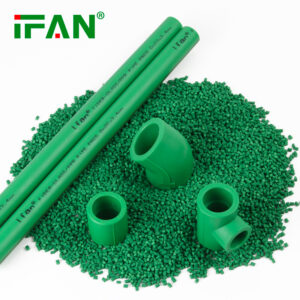Description
PPR Fittings: An In-Depth Guide for Plumbing Professionals
PPR fittings, an integral part of the polypropylene random copolymer (PPR) piping system, are essential components in modern plumbing installations. This comprehensive guide explores the latest advancements in PPR fittings, their unique benefits, installation techniques, and considerations for maintenance and longevity.
The Evolution of PPR Fittings
PPR fittings have undergone significant advancements in recent years, driven by the demand for more reliable and efficient plumbing solutions. Modern PPR fittings are designed with enhanced durability, improved chemical resistance, and increased pressure ratings. These advancements have made PPR fittings a preferred choice for various applications, including potable water supply, heating, and industrial fluid transfer.
Key Benefits of PPR Fittings
PPR fittings offer several advantages over traditional piping materials. Firstly, they are lightweight yet extremely strong, reducing installation time and labor costs. Secondly, PPR fittings are corrosion-resistant and can withstand a wide range of chemicals and temperatures. This ensures a long service life and minimal maintenance requirements. Furthermore, PPR fittings are easy to install and require no special tools or equipment, making them a cost-effective solution for plumbing professionals.
Installation Best Practices for PPR Fittings
Installing PPR fittings correctly is crucial for ensuring a leak-free and reliable plumbing system. Here are some best practices to follow during installation:
- Preparation: Ensure that the pipes and fittings are clean and free of debris or contaminants before installation.
- Alignment: Accurately align the fittings with the pipes to ensure a tight and secure connection.
- Support: Provide adequate support for the fittings to prevent sagging or deformation.
- Adhesives and Sealants: Use approved adhesives and sealants to create a watertight connection between the fittings and pipes.
- Testing: Perform pressure testing after installation to ensure the system’s integrity and reliability.
Maintenance and Longevity of PPR Fittings
Regular maintenance is essential for ensuring the longevity of PPR fittings. Here are some tips for maintaining your PPR plumbing system:
- Inspection: Periodically inspect the fittings for signs of wear, cracks, or leaks. Replace any damaged or worn-out components promptly.
- Cleaning: Use approved cleaning agents to remove dirt, debris, or contaminants from the fittings. Avoid using harsh chemicals that may damage the material.
- Temperature Control: Maintain the recommended operating temperatures to prevent excessive stress on the fittings.
- Pressure Monitoring: Monitor the system’s pressure regularly to ensure it remains within the safe operating range.
Conclusion
PPR fittings offer a reliable and cost-effective solution for modern plumbing installations. Their unique benefits, including durability, chemical resistance, and ease of installation, make them a preferred choice for plumbing professionals. By following best practices during installation and maintaining the system regularly, you can ensure the longevity and performance of your PPR plumbing system.
Related products
-
PPR Fittings
Green PPR Water Fittings
-
PPR Fittings
What is the PPR Fittings












